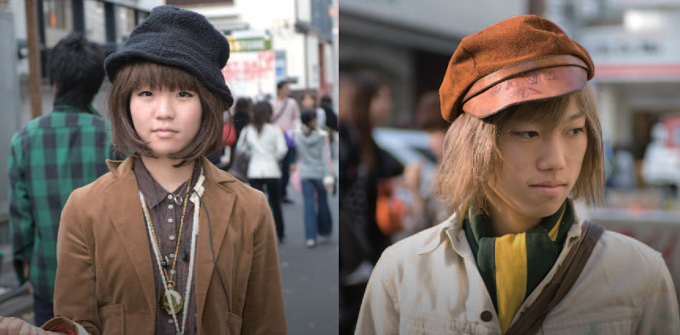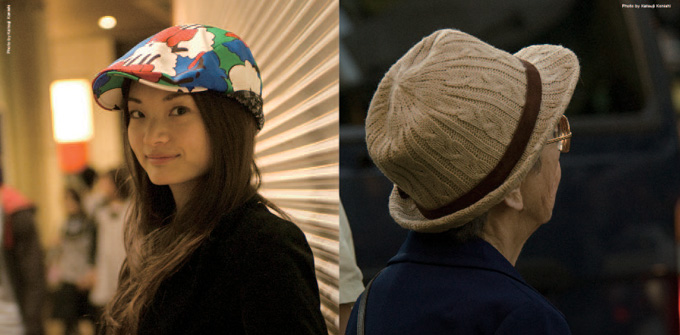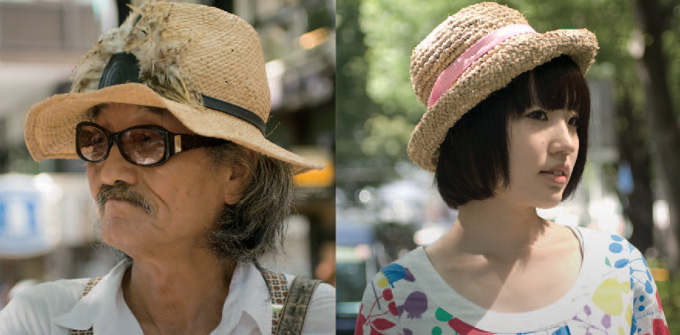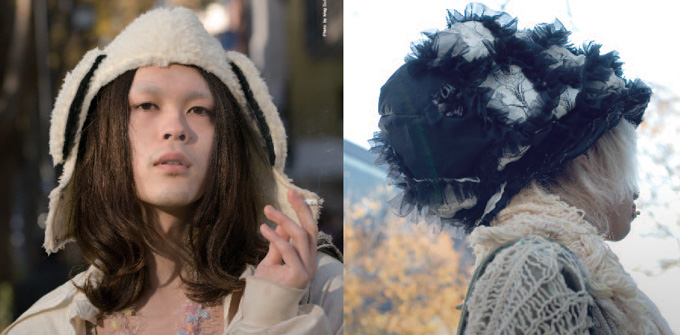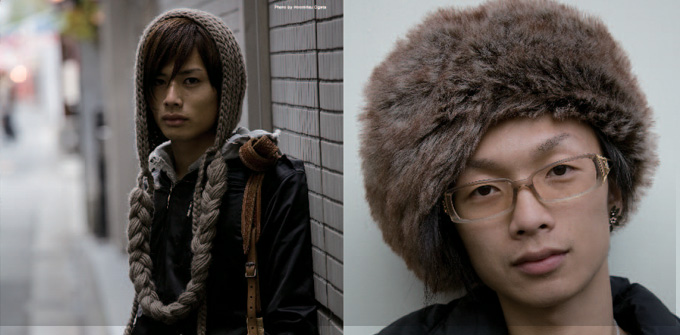Tokyo based hat designer Shlomit Yaish is constantly stimulated and excited by the manner Japanese people choose to wear hats.
These imaginative, sometimes whacky interpretations of hat fashion were wonderfully captured by Yaish together with three Tokyo-based photographers in Hats on the Streets of Tokyo a 294 page full color book.
Hats on the Streets of Tokyo is a collection of bright, colorful portraits on the burgeoning and cutting-edge hat culture in Tokyo – a place where average Japanese purchases three hats per season (or six hats per year!), putting Japan at the top of the world’s fashion capitals.
Tokyo Weekender sat with Shlomit to discuss her project ahead of the official book launch on December 9.
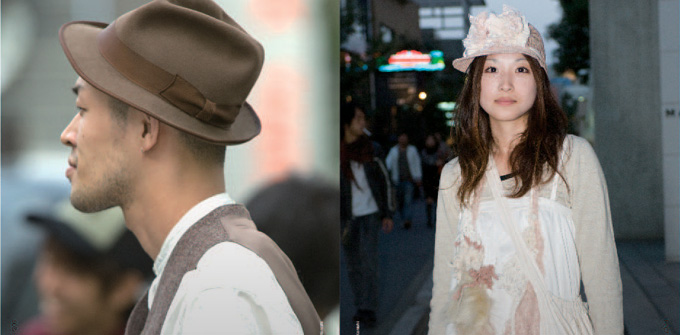
Tokyo Weekender: Why did you first come to Japan?
Shlomit Yaish: I was always fascinated with Tokyo and I got a job offer right after graduating from Fashion school. I came over in 2003 and I thought I’d come and just hang out, I ended up staying here for a few years.
Tell us about your work in Tokyo.
I worked in a fashion house, learning the business and manufacturing side, it was a really good learning experience.
There is so much creativity in Japan, why do you focus on hats?
I’m basically a fashion designer who expertise in women’s high end, but I can’t get away from hats. That’s what I’m really good at, that’s what comes to me naturally. I thought about moving away from hats but I guess destiny is calling. But I’m a very open minded person, and I like designing women’s wear, full collections and shoes too.
What made you want to create a book on the subject?
There were not many books on hats on the market, I wanted to educated people about the trends in Tokyo and also the types of hats available around the world. So I drew illustrations of every style of hat that I saw on the streets and I wrote the chronology of hats, from the 16th century to today.
At the back of the book I explain the shapes, the history and the names in each country.
For example in the U.S. a “Trucker Hat” is called a “Mesh Cap” in Japan. When I went to trade shows abroad, I learned all these new terms, I realized I was on to something really interesting.
Where did the idea for a book of street photographs come from?
The idea came when I was walking the streets, I was really fascinated by the way people wear their hats here. I would see my designs on people’s heads, and I got really excited. At the time I couldn’t see too many shots of hats in magazines, it was always ‘total look’, so I wanted to focus on the hat shapes that were available in Japan.
How long did it take to do the whole project?
It took four or five years, from concept to getting on the shelves, it was a very long process and we basically worked for a whole year to make the final book. The publishing process is a really time-consuming, there is always so much to check and fine tune.
Was it hard to find a publisher interested in your idea?
It wasn’t easy, I guess when you are not famous and no-one knows about you, they don’t want to take the risk even if you have a good idea. But I can understand why, I think the second time round will be much easier.
Did you enjoy the process?
It was a really enjoyable project for me, in the beginning we didn’t know if the book will be published, we just did it for fun. I didn’t know I would continue in the millinery business, I thought the book would actually conclude my life as a milliner in Japan.
How did you go about taking the pictures, did you just walk up to people on the street?
In the beginning it was me and a photographer, but for a gaijin on the streets it was always a “no”.
I realized I needed more help, so I brought along three really talented photographers (Konishi Katsujii, Hiromitsu Ogata, Meg Suko), we stood on the streets and just tried to take photos that we thought were really fashionable and cool.
You have to be lucky too, one day you could see a lot of interesting hats and none the next day.
Why do you love Japanese fashion so much?
Japanese fashion is the main reason it’s so fun to walk around Tokyo. I have been to a lot of places in the world and I can say that people in Japan follow fashion magazines and brands, but they are very individualistic. They wear basically what ever they want without being scared.
You can see any kinds of outfits on the streets you would never see anywhere in the world, for example in Hong Kong you will see girls wearing whatever the magazines tell them. In Japan, even if people wear Chanel, or a famous brand, they will wear it with something from a secondhand shop.
Which areas of Tokyo do you love the most?
I love Harajuku and Aoyama.
Do you like the infamous “Shibuya girl” look?
I like when they [girls in Shibuya] are dressed cool, but I don’t like it when they look like Barbie dolls!
Which style of hat will be big this winter?
I’m a fan of a beret, I’m very old fashioned that way. I think moulded felt hats are very popular now too, this year I think felt fedora’s, bucket hats and cloches will be huge.
What’s next for you?
I am working on another project, but it’s still in the early stages. I’m a project person and I always do a lot of things at the same time!
Do you still make hats now?
Yes, I do a lot of custom, hand-made hats for cocktail parties and weddings.
How do people order a hat from you?
Just visit my website.
You must know everything there is to know about hats now, will you ever stop?
Even as a milliner, I’m supposed to be an expert but I learned so much from this project. After making this book I know everything there is to know about hats! I researched a lot, it was kind of like writing a thesis,without getting another degree.
There are a lot of people creating hats from scratch so there are always new shapes and patterns being made. It’s an endless industry.
Hats on the Streets of Tokyo, by Shlomit Yaish.
Photography by Konishi Katsujii, Hiromitsu Ogata, Meg Suko.
Buy online at: englishbooks.jp
Official launch party at Velours, Friday December 9, 2011.
Official site: http://velours.jp/
Doors: 22:00 – Late
Entry: ¥2000 or ¥1000 if you wear a hat.

